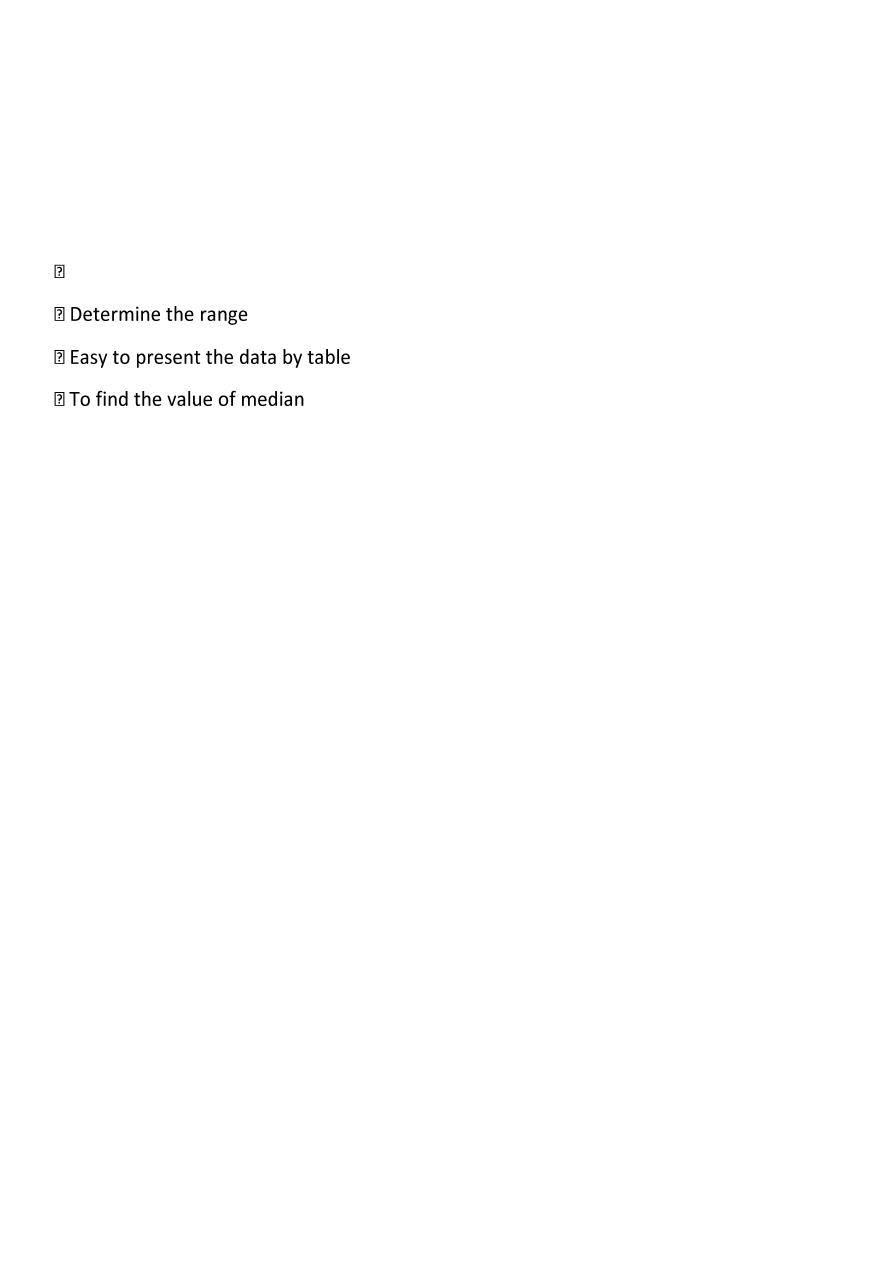
Dr.Alaa
Community Medicine
Lecture-2-
Page 1 of 7
Summarisation and presentation of data
Data organisation (Ordered array):
It is the enlistment or the arrangement of the data according to their magnitude from the
smallest to the largest or vice versa.
The benefits of ordered array are:
Determine the smallest value (Xs) and the largest value (Xl)
Data presentation:
Data presentation is either by:
1-Neumerical (numbers)
2- Tables: as
a-Master table
b- Simple frequency distribution table
c- Class interval frequency distribution table
3- Graphs (Pictorial presentation of data)
When we have the data composed of small sample size (n=20) it is easy to present
them by numerical (numbers) "simple data", while if the data is more than 20 values or
observations it is better to present them by tables
It contains the information regarding all variables included in the study (spreadsheet in
the computer Excel).
From master table the information regarding one or two variables will be taken and
presented in simple frequency or an other type of tables.
Simple frequency distribution table:
It is the arrangement of data according to their magnitude and the frequency of occurrence
of each magnitude.
When we want to complete the table, it is composed of many columns including the values
of the variable (X), the frequency of occurrence recurrence (F), the cumulative frequency
(Cum.F), the ~2~
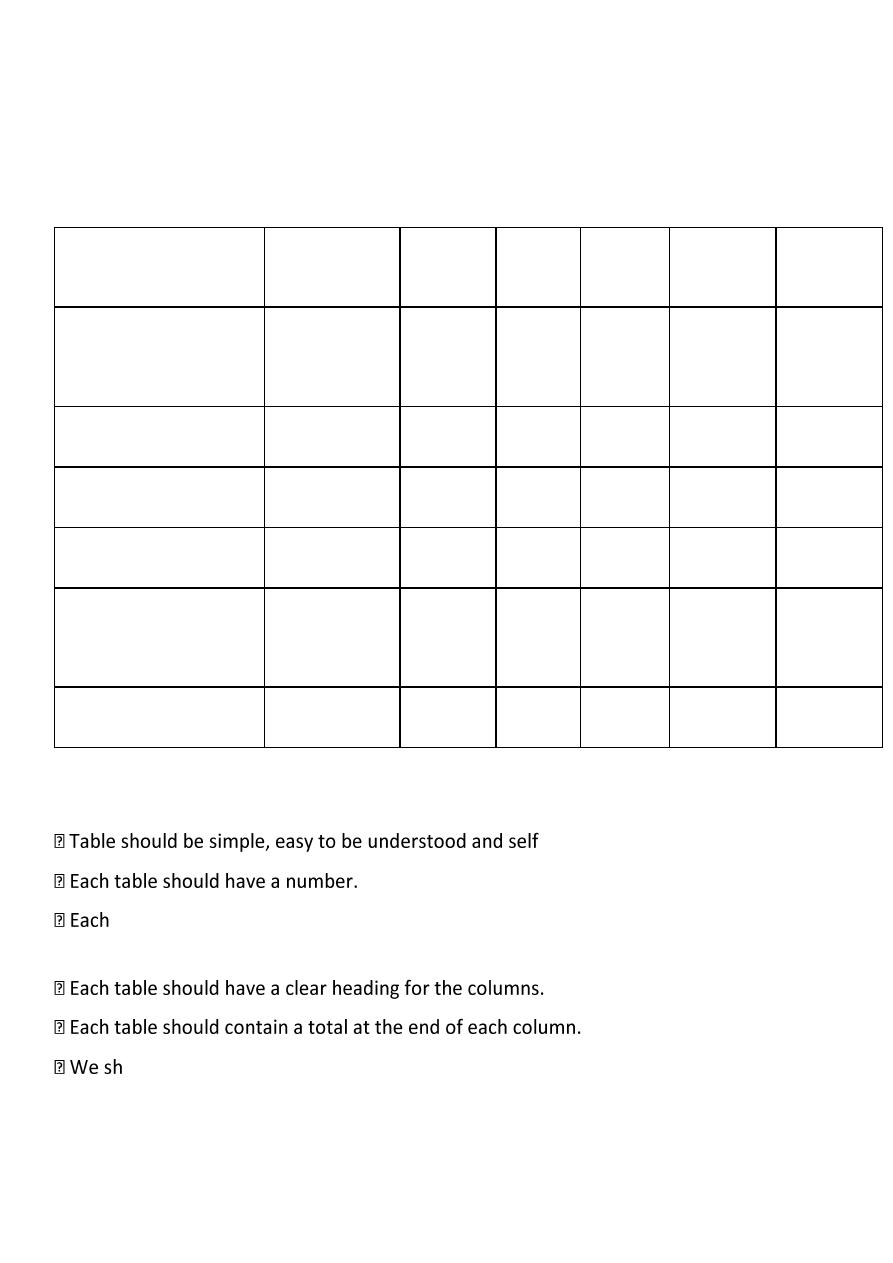
Dr.Alaa
Community Medicine
Lecture-2-
Page 2 of 7
relative frequency (R.F.) (R.F.=F/ n), the cumulative relative frequency (C.R.F), the relative
frequency percentage (R.F.%) (R.F.% =F/ n X 100), and the cumulative relative frequency
percentage (C.R.F.%) as in the following example:
Table (1): The parity distribution of mothers attending ANC clinic in the Al-Muntezeh PHCC
for the year 2010
Parity
Frequency Cum.F R.F.
C.R.F R.F. % C.R.F.
%
Primigravida
(0)
25
25
0.25
0.25
25 %
25 %
1
14
39
0.14
0.39
14 %
39 %
2
16
55
0.16
0.55
16 %
55 %
3
18
73
0.18
0.73
18 %
73 %
4 & more
27
100
0.27
1.00
27 %
100
%
Total
100
--
1.00
--
100
--
The characteristics of tables:
- explanatory.
table should have a title written at the top of it. This title should answer the
following questions: what, where, and who.
ould avoid the use of abbreviations and codes, and if we have to use them we
should refer to them at the bottom of the table.
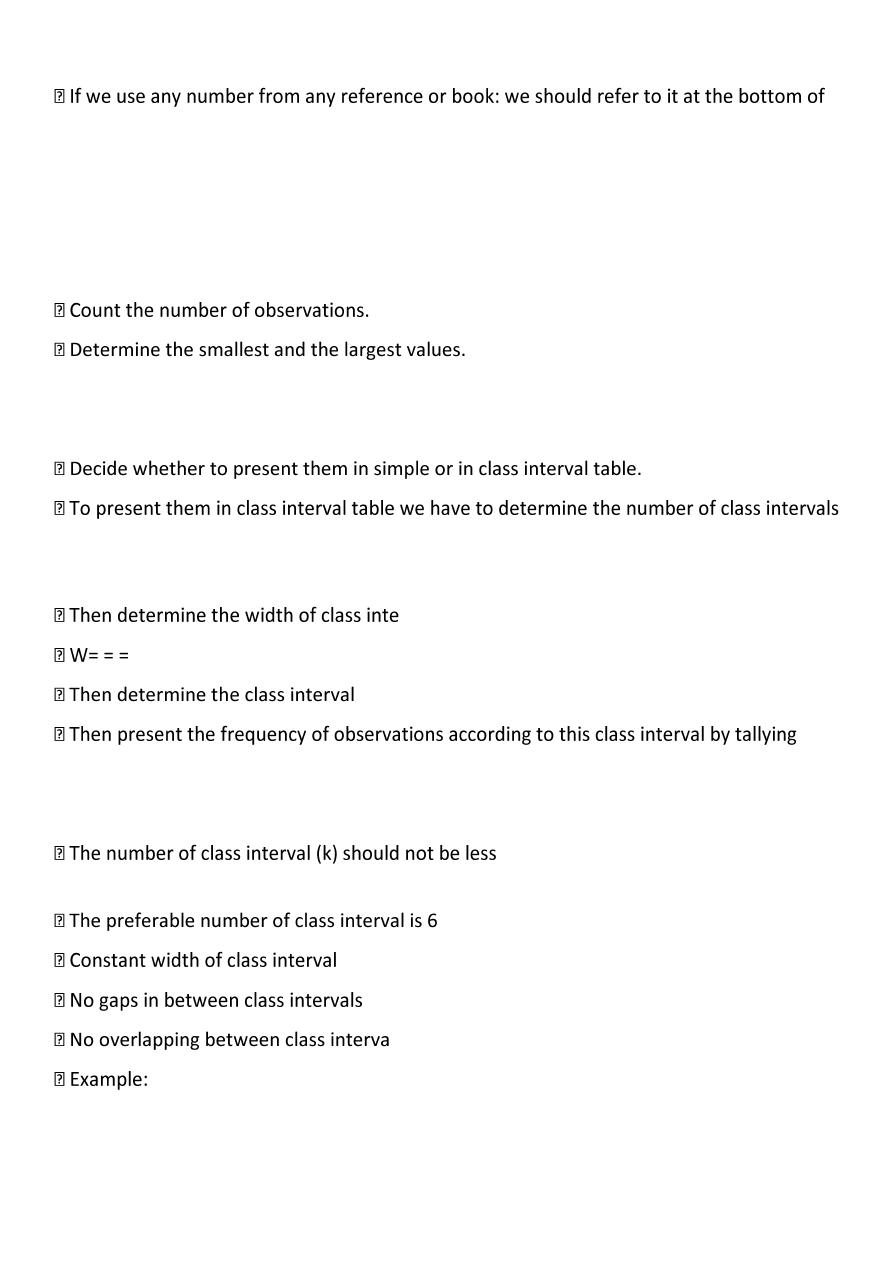
Dr.Alaa
Community Medicine
Lecture-2-
Page 3 of 7
the table.
Class-interval frequency distribution table:
The data of continuous quantitative type is presented here as intervals, the steps to present
the data by class interval table is as following:
according to Sturges' formula:
K=1+3.322 log10 n
rval
The additional characteristics of class interval tables:
than 5 (in order not to lose the details)
and not more than 20
-12, or using Sturges' formula.
ls (the observation will be presented once only)
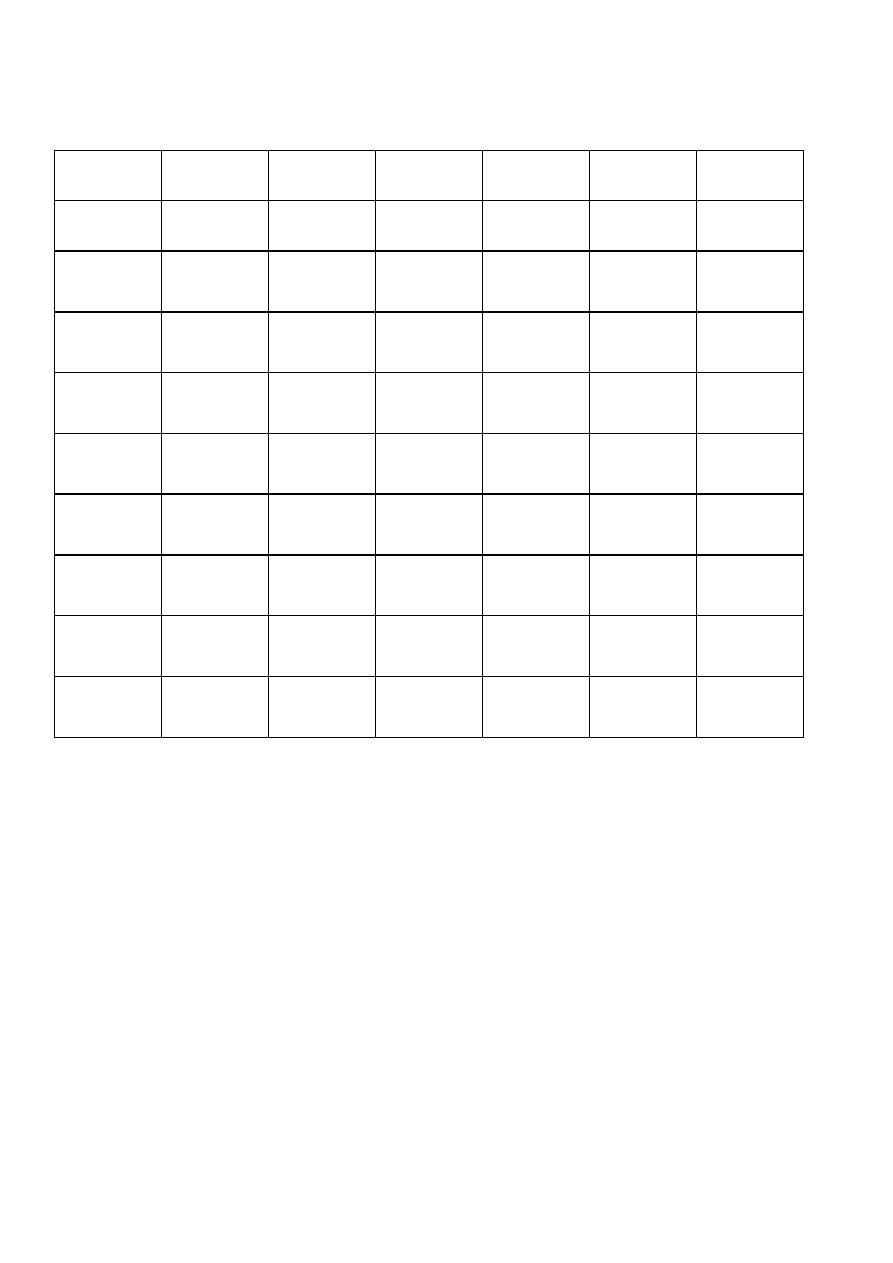
Dr.Alaa
Community Medicine
Lecture-2-
Page 4 of 7
The haemoglobin level in g/dL for 70 pregnant women in Bintul Huda Teaching Hospital for
the year 2010
10.2
13.7
10.4
14.9
11.5
12.0
11.0
13.3
12.9
12.1
9.4
13.2
10.8
11.7
10.6
10.5
13.7
11.8
14.1
10.3
13.6
12.1
12.9
11.4
12.7
10.6
11.4
11.9
9.3
13.5
14.6
11.2
11.7
10.9
10.4
12.0
12.9
11.1
8.8
10.2
11.6
12.5
13.4
12.1
10.9
11.3
14.7
10.8
13.3
11.9
11.4
12.5
13.0
11.6
13.1
9.7
11.2
15.1
10.7
12.9
13.4
12.3
11.0
14.6
11.1
13.5
10.9
13.1
11.8
12.2
K=1+30322 log10 n
= 1+3.322 X log10 70
=1+3.322 X 1.85
= 1+6.15
= 7.15
= ~ 7
The width of class interval = R (Max-Min)/ K
= (15.1-8.8)/ 7
=1
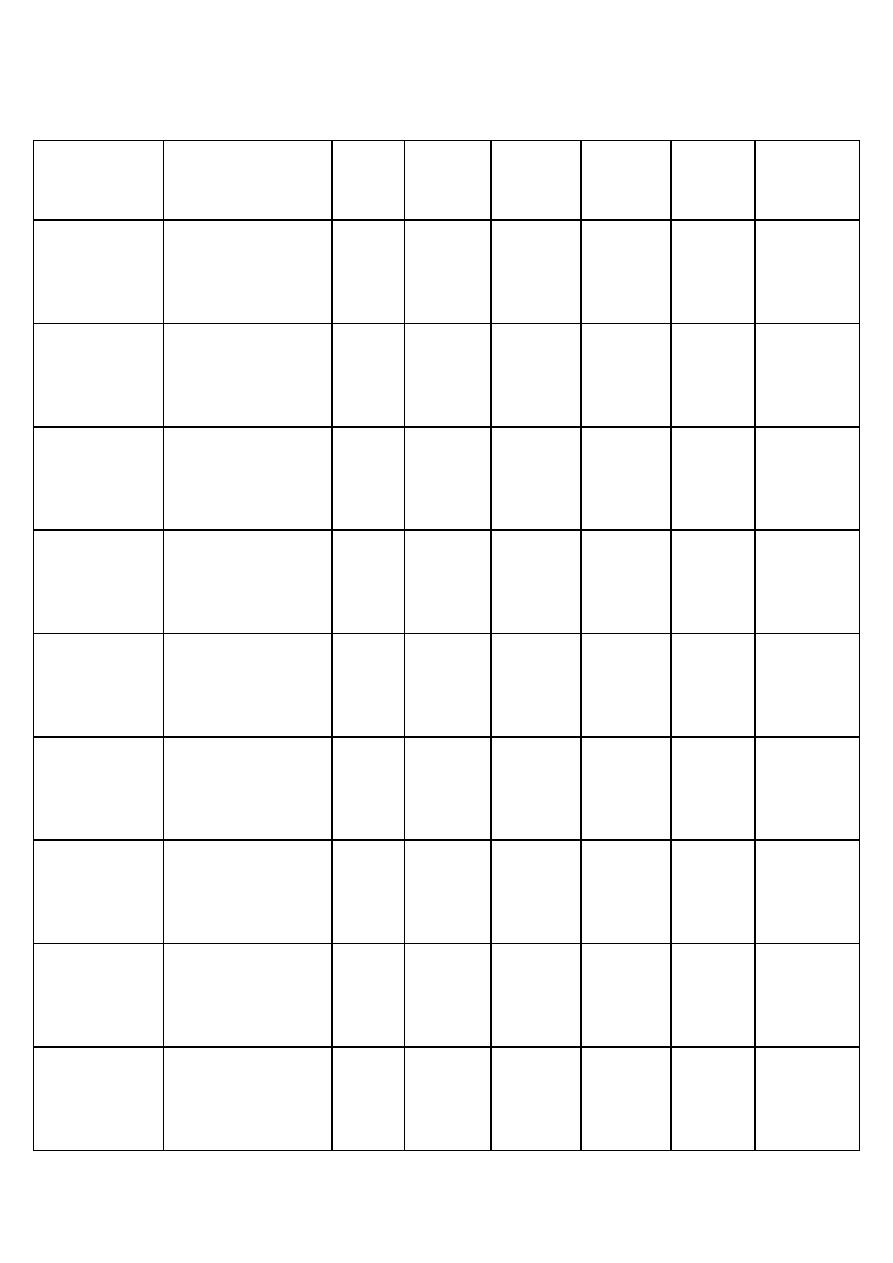
Dr.Alaa
Community Medicine
Lecture-2-
Page 5 of 7
Table 3: The haemoglobin level in g/ dL for 70 pregnant women in Bintul Huda Teaching
Hospital for the year 2010
Hemoglobin
(g/ dL)
Tallying
Freq.
Cum.F
R.F.
C.R.F.
R.F.%
C.R.F.%
8-
I
1
1
0.014 0.014 1.4
%
1.4 %
9-
III
3
4
0.043 0.057 4.3
%
5.7 %
10-
IIIII IIIII IIII
14
18
0.2
0.257 20.0
%
25.7 %
11-
IIIII IIIII IIIII
IIII
19
37
0.27 0.528 27.1
%
52.8 %
12-
IIIII IIIII IIII
14
51
0.2
0.728 20.0
%
72.8 %
13-
IIIII IIIII IIII
13
64
0.186 0.914 18.6
%
91.4 %
14-
IIIII
5
69
0.071 0.985 7.1
%
98.5 %
15-15.9 I
1
70
0.014 1.00 1.4
%
100 %
Total
70
--
1.00 --
100
%
--

Dr.Alaa
Community Medicine
Lecture-2-
Page 6 of 7

Dr.Alaa
Community Medicine
Lecture-2-
Page 7 of 7
